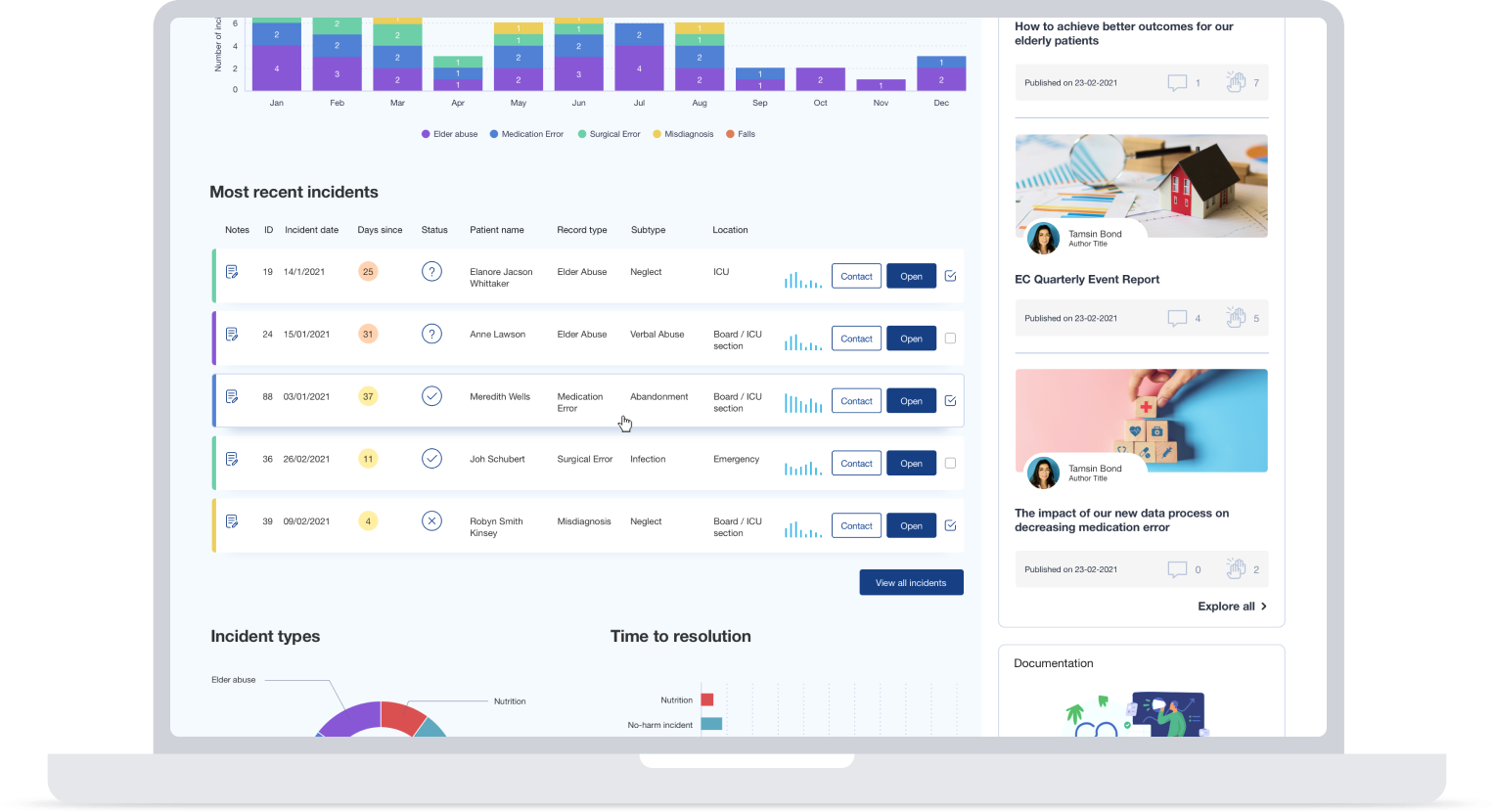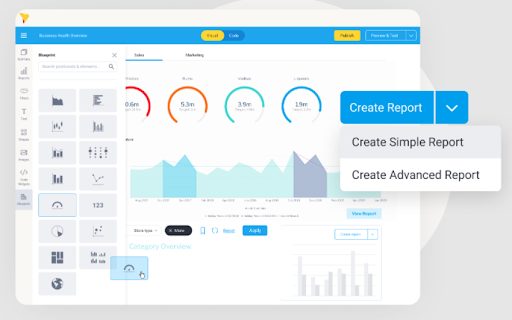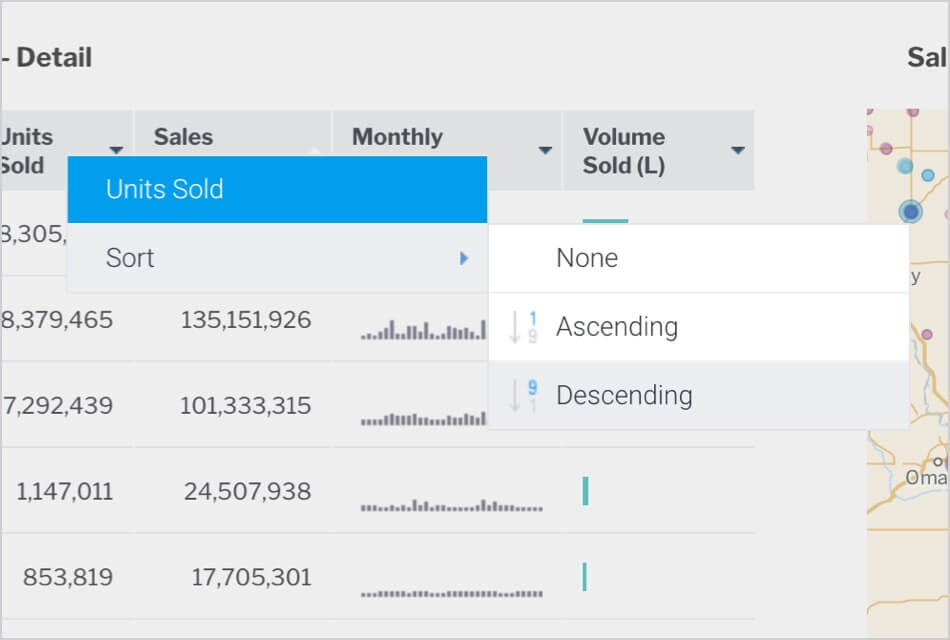
Why Analytics and Reporting Tools are Essential
Data is the biggest asset for any business, and its advantages are many.
Data can help enterprises better understand their customers, improve advertising campaigns and bottom lines, and personalize their content. However, you cannot access these benefits without proper embedded analytics and reporting tools that make data a true part of your day-to-day workflow. Because while raw data has a lot of potential, a business needs the right tools to access, manage, share and analyze it to great effect.
One key topic we encounter with our customers is what exactly the difference is between data analytics (or embedded analytics), data visualization and BI reporting. This article will help you understand the nuances, and why, ultimately, you need all of it in your software.
What is the difference between data analytics, data visualization, and BI reporting?
Data analytics refers to examining data sets to conclude the information they contain. It is a technique that enables a business to take raw data to extract valuable insights from it. Today, many of these solutions are called embedded analytics solutions, which refers to their ability to be integrated into the core transactional environments of your software.
Data visualization is a term used to represent data through typical graphics. It uses charts, plots, animations, and infographics to represent data. These visuals display information that communicates complex data, and shows data-driven insights that are easy to grasp.
Business intelligence (BI) reporting, or data reporting, is the process of collecting and formatting raw data. It also includes translating it into a clear format to assess the ongoing performance. This data can then be used to answer basic questions about the state of a business.
Why are data analytics, data visualization, and BI reporting essential?
Data Analytics
Data analytics is generally used to help companies better understand their customers. It also helps in personalizing content and creating content strategies. With analytics, businesses evaluate their ad campaigns and develop products. Typically, businesses use data analytics to boost performance and improve their worth. The data can include historical or new information businesses get for a particular initiative.
One example of data analytics is segmentation. It is used to help segment audiences by different demographic groups and analyze attitudes and trends. The businesses can then produce more specific, accurate, and just snapshots of public opinion.
Learn more: Yellowfin Embedded Analytics
Data Visualizations
Data visuals are essential for businesses that want to communicate information clearly and efficiently. It is an advanced step in data analysis and data science. As per the report of Vitaly Friedman (2008), business groups use data visuals. They use it as an essential component of assertive connection. Visuals make research and data analysis effective and quicker. It does so by combining user-friendly and pleasing features.
One example of data visualization is representing an annual budget. Budget numbers that are otherwise obscure and tough can be made simple and digestible with visuals like charts and graphs. This can then be delivered to better estimate the budget better.
See more: Yellowfin Data Visualization
Data Reporting
Data reporting is essential when measuring the progress of every area of a business group. It informs professional decisions and day-to-day matters at any company.
A data report is also essential to prioritize business tasks. It tells where a company should spend most of its time and resources and what needs more attention.
Offering the ability for every user, not just the analysts in your business, to create, share and consume reports is essential to ensuring data is being used to drive business decisions.
Learn more: Yellowfin Self-Service BI
How these analytics and reporting tools improve processes
With a data analytics solution in place that supports robust data visualization and BI reporting features, your business can collect, report and display data far more effectively than with previous ad-hoc or legacy (i.e. spreadsheets) methods. They are essential to help collect and organize their data in an understandable format, and generate reports and visuals in a way that fits different business departments and their use cases.
So, the bottom line is if a business implements effective reporting and analytics, it will increase contact and yield. The timeliness and accuracy will also improve. It will also aid in creating a sustainable environment where management can make informed decisions. Furthermore, it will also grow the business to a new level.
Top benefits of analytics and reporting tools
Having some form of data analytics capability in your business, which includes data viusalization and BI reporting functionality, can bring significant value and benefits.
Maximum Yield
If a business wants to remain productive, it must be flexible to adopt industry changes. One such chance is meeting the unique needs of targeted consumer groups. To achieve this, businesses need an inventory and financial reporting system that supports this notion. They also need relevant information to management promptly. So, all this is not possible without an effective reporting system.
Increased Timeliness
Once the data is collected, the primary concern of a business is its presentation. The presentation is usually to business owners and decision-makers. This must be thoughtful and insightful. If it is not in a clear form, there is a high chance of critical information going unattended. To avoid this, many businesses turn to analytics and reporting tools. These tools help manage the analytics while generating immediate reports for decision-makers.
High Accuracy
A business knows that planning, forecasting, and budgeting are dependent on the accuracy of the information. If the information is not accurate, it is unwise to think the right decisions. However, if a business has a reporting system that provides both relevant and accurate information, its decisions will be correct.
Looking For Best Analytics Reporting Tool For Your Business? Try Yellowfin
Yellowfin is one of the best data analytics solutions to unlock better BI reporting and solve data complexity with automation, data storytelling, and action-based dashboards. It is simple to use and enables users to see, understand, and do more with their data.
Get the best data analytics, data visualizations and BI reporting possible
The Yellowfin analytics platform is known for its ease of use, on top of providing ongoing support and scalability for any company. If you want to optimize your business, start with Yellowfin.


